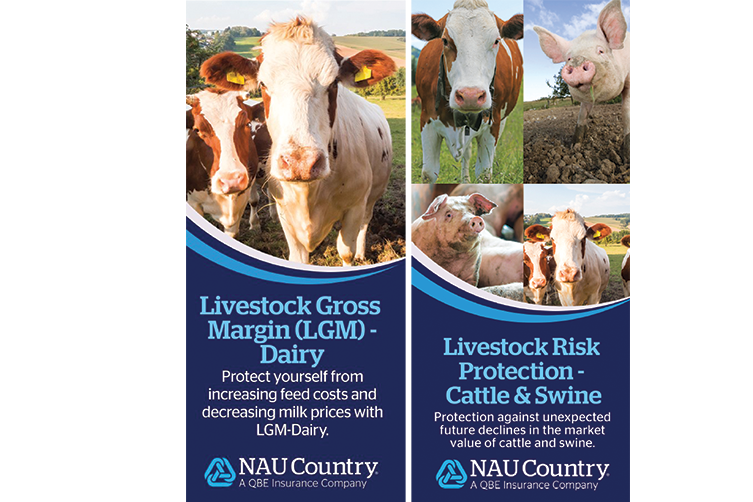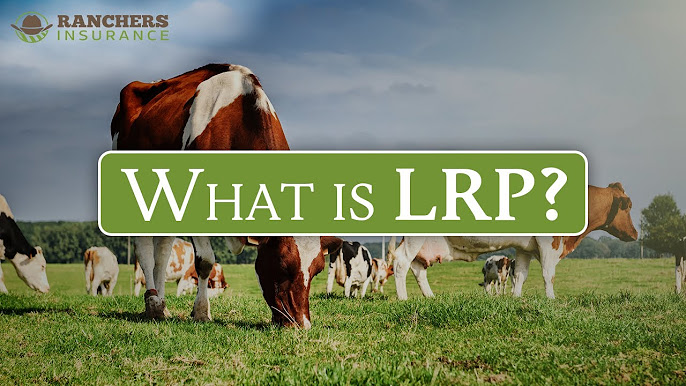Navigating Service Risks with Bagley Risk Management
Navigating Service Risks with Bagley Risk Management
Blog Article
Understanding Livestock Danger Security (LRP) Insurance: A Comprehensive Guide
Navigating the world of animals risk defense (LRP) insurance can be a complicated undertaking for numerous in the agricultural sector. From how LRP insurance coverage works to the numerous protection choices offered, there is much to discover in this extensive guide that could possibly form the way animals manufacturers approach risk management in their businesses.

How LRP Insurance Policy Works
Occasionally, recognizing the mechanics of Livestock Danger Defense (LRP) insurance coverage can be complicated, yet damaging down how it functions can supply quality for breeders and farmers. LRP insurance is a risk monitoring tool designed to shield animals manufacturers versus unexpected price declines. The plan permits manufacturers to set a coverage degree based upon their certain requirements, selecting the number of head, weight variety, and insurance coverage cost. As soon as the policy remains in location, if market rates drop listed below the coverage cost, producers can sue for the distinction. It is necessary to keep in mind that LRP insurance coverage is not a revenue assurance; rather, it concentrates entirely on rate risk security. The insurance coverage duration normally ranges from 13 to 52 weeks, giving flexibility for manufacturers to pick a duration that lines up with their manufacturing cycle. By utilizing LRP insurance, ranchers and farmers can reduce the economic risks connected with fluctuating market value, making certain better security in their procedures.
Eligibility and Coverage Options

When it concerns protection alternatives, LRP insurance uses producers the adaptability to choose the protection degree, protection duration, and recommendations that best match their risk administration requirements. Protection degrees usually vary from 70% to 100% of the expected finishing worth of the insured animals. Manufacturers can likewise select protection durations that straighten with their production cycle, whether they are insuring feeder cattle, fed livestock, swine, or lamb. Endorsements such as rate risk defense can better tailor insurance coverage to safeguard against negative market changes. By recognizing the qualification standards and insurance coverage alternatives readily available, animals producers can make enlightened decisions to manage risk efficiently.
Benefits And Drawbacks of LRP Insurance Coverage
When assessing Livestock Danger Defense (LRP) insurance, it is essential for livestock producers to evaluate the downsides and advantages inherent in this threat administration tool.

One of the main benefits of LRP insurance policy is its ability to offer security versus a decrease in animals rates. Additionally, LRP insurance policy uses a level of flexibility, enabling producers to customize coverage degrees and plan durations to match their details demands.
One restriction of LRP insurance is that it does not secure versus all types of dangers, such as illness episodes or natural calamities. It is essential for producers to meticulously evaluate their private threat exposure and monetary scenario to determine if LRP insurance is the ideal danger monitoring device for their procedure.
Understanding LRP Insurance Premiums

Tips for Making The Most Of LRP Perks
Making best use of the benefits of Animals Threat Security (LRP) insurance coverage calls for strategic preparation and aggressive risk administration - Bagley Risk Management. To make the many of your LRP coverage, consider the following ideas:
Regularly Assess Market Problems: Keep informed about market patterns and cost fluctuations in the livestock market. By monitoring these aspects, you can make enlightened decisions concerning when to buy LRP insurance coverage to secure versus possible losses.
Establish Realistic Coverage Levels: When picking protection degrees, consider your production expenses, market value of livestock, and potential dangers - Bagley Risk Management. Setting reasonable protection levels ensures that you are appropriately protected without overpaying for unneeded insurance policy
Diversify Your Insurance Coverage: Instead of counting solely on LRP insurance coverage, take into consideration expanding your risk administration approaches. Integrating LRP with other threat management tools such as futures contracts or choices can offer detailed insurance coverage against market unpredictabilities.
Review and Adjust Protection Routinely: As market problems transform, regularly examine your LRP protection to guarantee it straightens with your current risk exposure. Changing protection degrees and timing of acquisitions can assist enhance your threat protection method. By complying with these suggestions, you can optimize the benefits of LRP insurance and protect your animals operation against unforeseen dangers.
Verdict
To conclude, livestock danger defense (LRP) insurance is a valuable tool for farmers to take care of the economic threats linked with their livestock procedures. By recognizing exactly how LRP works, eligibility and insurance coverage choices, in addition to the pros and cons of this insurance, farmers can make informed decisions to safeguard their incomes. By very carefully taking into consideration LRP costs and applying techniques to take full advantage of advantages, farmers can reduce potential losses and make certain the sustainability of their procedures.
Animals manufacturers interested in obtaining Livestock Risk Defense (LRP) insurance policy can check out an array of qualification standards and coverage options customized to their details animals operations.When it comes to protection options, LRP insurance coverage supplies manufacturers the versatility to select the protection degree, insurance coverage period, and recommendations that finest match their threat management needs.To understand the intricacies of Animals Danger Defense (LRP) insurance her comment is here fully, recognizing the his comment is here aspects affecting LRP insurance coverage premiums is vital. LRP insurance costs are identified by various components, including the protection degree selected, the expected cost of animals at the end of the coverage duration, the kind of animals being guaranteed, and the size of the protection duration.Review and Adjust Insurance Coverage Frequently: As market conditions alter, periodically examine your LRP protection to guarantee it aligns with your current danger direct exposure.
Report this page